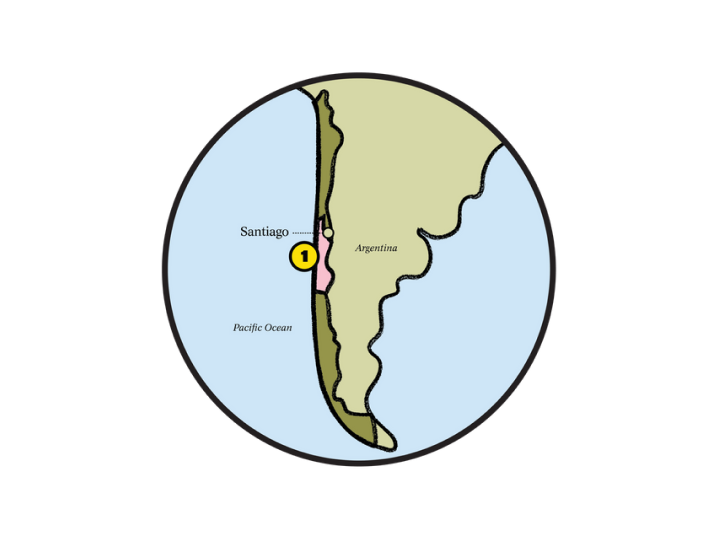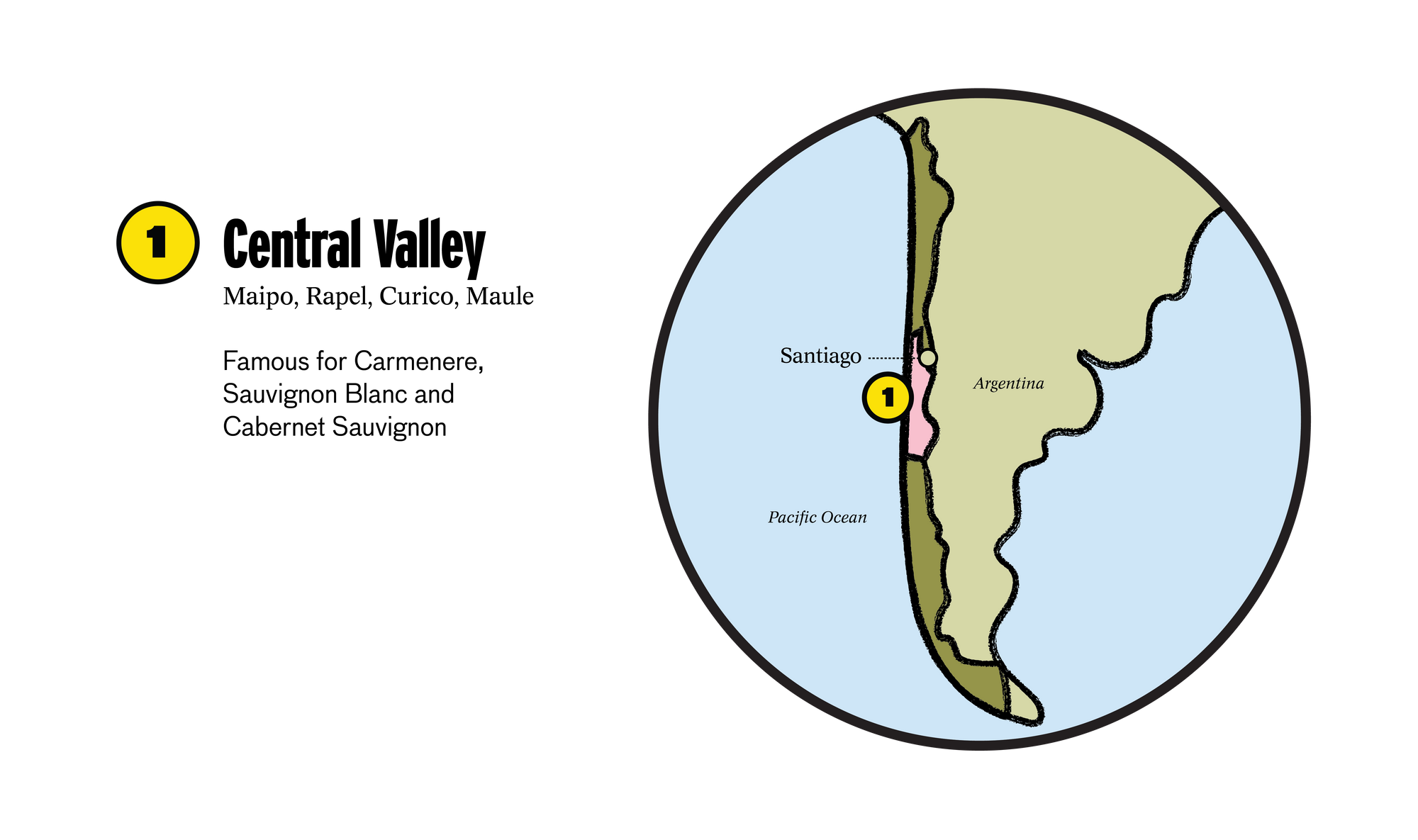

Has lived in Argentina's shadow for too long now, and is starting to forge its own path.
History--red
Chile's wine story is an interesting one, given it was once an important producer on a global scale, but politics shut down the innovation and led to a gradual decline. Only in the past 30 or so years have things turned to the good again... and what a reinvigoration!

Chile’s former 'golden age' was the end of the 1800s, when the rest of the wine world had been crippled by the phylloxera louse, but this isolated wine producer could supply plenty of healthy, deep-coloured wine, made from familiar varieties that had been imported into Chile earlier in the century. At the time, the industry was dominated by just 10 Chilean families, many of them still dominant players today. For the next century various forms of dictatorships, populism and socialism battled over Chile, but the return of democracy fuelled extraordinary economic growth throughout Chile in the early 90s, including dragging the Chilean wine industry into the modern world. New irrigation techniques, updated winemaking, better barrels - the changes were rampant and elevated the quality across the board!
Until this time, few Chileans were interested in wine. This may have been frustrating for Chile’s modest collection of dedicated viticulturists and winemakers, but it had little effect on the influx of foreign investment, attracted by Chile’s growing reputation for growing and making great wine. Famous names such as as the Rothschilds of Bordeaux’s Chateau Lafite, Miguel Torres from Spain and the family behind liqueur Grand Marnier all have bought into Chilean wineries.
The viticultural slowdown in the 20th century, apart from a lack of investment, was the gap between grape growers and wine producers. Most vineyards were handled by old farming families, who cared little for wine. With time this is changing, and wine is becoming a much bigger part of Chilean life. Older varieties are being discovered, and vineyard selection is becoming more important. Wine is no longer just agriculture, but a special industry in its own right.
Main regions--aromatic
Central Valley - a large valley close to Santiago in the centre of the country. Split into 4 subregions (Maipo, Rapel, Curico and Maule). Considered the heart of Chilean wine production, and home to many of the most famous producers. All three of the grapes listed below are grown there, along with large quantities of Chardonnay

Main grapes--racy
Carmenere - if Chile were to have an emblematic grape, this would probably be it! Originally found in Bordeaux, this richly coloured red grape produces wines similar to Cabernet Sauvignon (rich fruit and some herbaceousness), but with less tannin
Sauvignon Blanc/Vert - many years ago it was believed that most of Chile's white vineyards were all Sauvignon Blanc, but some careful studies showed a lot of the vines to be a barely related cousin called Sauvignon Vert. Whoops. These days, vignerons have been planting Sauvignon Blanc and can easily tell the difference.
Cabernet Sauvignon - actually the most planted grape in the country, and despite the adoption of Carmenere, still regarded as the country's most prestigious grape.
Specific wine styles--strawberry
Pais - this could be listed under 'Main Grapes', but is little known outside Chile. A ancient variety, it generally produces light, zesty reds that have an element of earthiness to them.
Pisco - ok not a wine, but made from grapes! And certainly, the alcoholic beverage that Chile is best known for. Pisco is essentially a grape brandy, made using a range of interesting varieties. Generally not aged in wood, it expresses the grape characters much more than French brandy.
Do you know your wine personality? If your answer is no, take our quiz to find out which wines to pick up next and build your box!
Build my box





